
Wastewater management is a critical issue in today’s world, where increasing urbanization and industrial activities generate significant amounts of waste. The need for efficient and environmentally friendly treatment plants for wastewater has never been more urgent. From residential to industrial applications, effective treatment of wastewater ensures the protection of our water resources and promotes public health. In this blog, we will explore the various sources and impacts of wastewater, stages of wastewater treatment, and different types of wastewater treatment plants, including Activated Sludge, SBR, MBBR, Johkasou technology, and the innovative packaged sewage treatment plant SUSBIO ECOTREAT.
What is Wastewater?
Wastewater refers to the used water discharged from homes, businesses, industries, and agricultural activities. It contains a mix of harmful pollutants such as organic matter, chemicals, heavy metals, and pathogens. If left untreated, wastewater can cause severe environmental damage, polluting rivers, lakes, and groundwater, as well as posing health risks to humans and animals.
Sources and Impact of Wastewater
Understanding the sources of wastewater is essential to implementing effective treatment methods. The primary sources include:
Domestic Wastewater: Generated from households, it includes water from kitchens, bathrooms, and laundry, carrying organic matter, detergents, and pathogens.
Industrial Wastewater: Produced by industries, it contains a higher concentration of chemicals, metals, and hazardous substances, depending on the industrial process involved.
Agricultural Wastewater: Originates from farming activities, including runoff from fields, livestock operations, and irrigation systems, often containing fertilizers, pesticides, and organic waste.
Stormwater Runoff: This is rainwater that flows over streets, roofs, and other surfaces, picking up pollutants like oil, grease, and litter before entering natural water bodies.
The impact of untreated wastewater can be devastating. It contaminates water bodies, leading to eutrophication, which depletes oxygen in the water and harms aquatic life. Pollutants in wastewater can also seep into groundwater, affecting drinking water supplies. Furthermore, exposure to untreated wastewater can cause waterborne diseases, posing a significant public health risk.
Stages of Wastewater Treatment
Wastewater treatment is a multi-stage process designed to remove contaminants from wastewater, making it safe for discharge or reuse. The key stages include:
Preliminary Treatment: This stage removes large solids, debris, and grit using screens and sedimentation. It prepares the water for further treatment.
Primary Treatment: The wastewater is allowed to settle in large tanks, where heavy solids sink to the bottom and lighter materials float to the top. The clarified water moves on to the next stage.
Secondary Treatment: This biological process uses microorganisms to break down organic matter and pollutants. The most common methods used here are activated sludge, SBR, and MBBR.
Tertiary Treatment: This final stage removes any remaining contaminants, nutrients, or pathogens, producing high-quality effluent. Methods include filtration, disinfection, and nutrient removal.
Types of Wastewater Treatment Plants
Different technologies are employed in treatment plants for wastewater, each with unique advantages depending on the application. Let’s explore some of the most effective systems:
Activated Sludge Process (ASP)
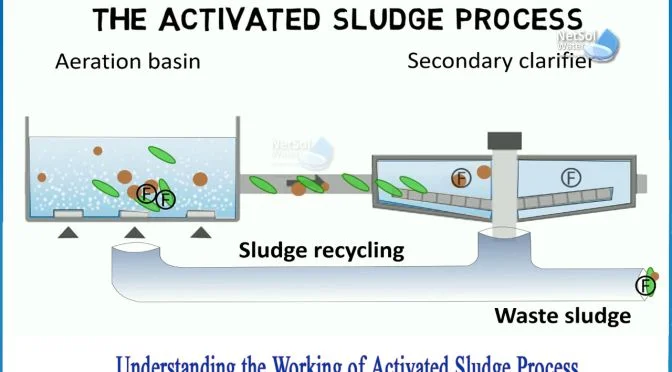
The Activated Sludge Process is one of the most widely used biological treatments. It involves aerating the wastewater to promote the growth of bacteria that consume organic pollutants. These bacteria form flocs, which settle out of the water, leaving behind clean effluent.
Advantages:
- Effective at removing organic matter and nutrients.
- Flexible and can handle fluctuations in load.
Disadvantages:
- Requires large space and high energy input for aeration.
- Sensitive to toxic chemicals.
Sequencing Batch Reactor (SBR)
The Sequencing Batch Reactor (SBR) is a variation of the activated sludge process but operates in batches. Wastewater is introduced into a single tank where it undergoes aeration and sedimentation in sequential steps.
Advantages:
- Requires less space compared to traditional ASP systems.
- Can treat high-strength wastewater effectively.
Disadvantages:
- Complex operation due to batch processing.
- Higher maintenance requirements.
Moving Bed Biofilm Reactor (MBBR)
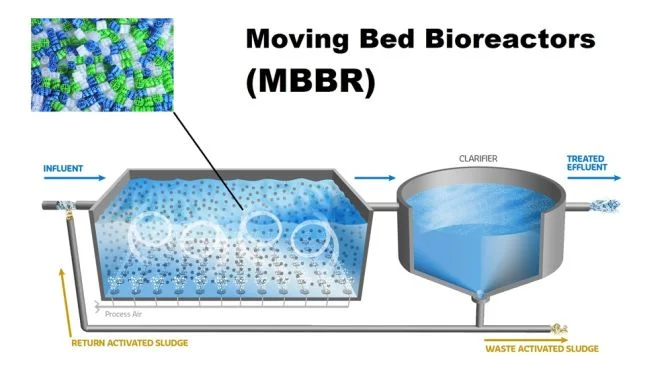
The Moving Bed Biofilm Reactor (MBBR) is an advanced biological treatment method where specialized plastic carriers are added to the treatment tanks. These carriers provide a large surface area for biofilm growth, which aids in the breakdown of pollutants.
Advantages:
- Compact design with high treatment efficiency.
- Handles high organic loads and fluctuating wastewater volumes.
Disadvantages:
- Requires regular maintenance of the biofilm carriers.
- Higher initial cost compared to other systems.
SUSBIO ECOTREAT
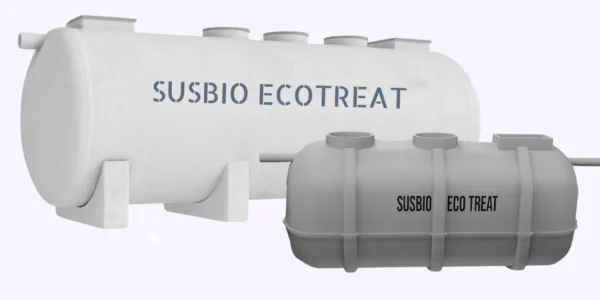
SUSBIO ECOTREAT is an innovative, prefabricated wastewater treatment solution designed by Sustainable Biosolutions Pvt. Ltd. It incorporates both physical and biological treatment processes in a single compact unit, making it highly efficient and environmentally friendly.
Key Features:
- High-Quality Fiber-Reinforced Plastic (FRP): Ensures long-lasting durability and resistance to corrosion.
- Dual-Treatment Process: Uses a combination of anaerobic and aerobic treatment for superior pollutant removal.
- Energy Efficiency: Optimized for low power consumption, making it cost-effective for users.
- Easy Installation and Maintenance: Prefabricated design reduces installation time, and the system is easy to maintain.
Advantages:
- Adaptable to various applications, from residential to industrial use.
- Environmentally sustainable and energy-efficient.
- Strong after-sales service and support.
JOHKASOU TECHNOLOGY
Johkasou is a Japanese wastewater treatment system commonly used for small-scale applications such as homes, apartments, or small communities. It combines anaerobic and aerobic processes within a single tank to treat domestic wastewater.
Advantages:
- Space-saving design, ideal for decentralized systems.
- Efficient in removing organic matter and pathogens.
Disadvantages:
- Limited to small-scale applications.
- May require frequent monitoring and maintenance.
Conclusion
Wastewater treatment is crucial for protecting our environment, ensuring public health, and promoting sustainable development. With a variety of technologies available, choosing the right treatment plants for wastewater depends on the specific needs of the project, the volume and type of wastewater, and the level of treatment required.
Among the popular treatment options like Activated Sludge, SBR, MBBR, and Johkasou, the SUSBIO ECOTREAT stands out as a revolutionary solution. Its prefabricated design, advanced treatment processes, and energy-efficient operation make it a top choice for those seeking effective wastewater treatment. Whether for residential communities or industrial operations, SUSBIO ECOTREAT offers a cost-effective, reliable, and sustainable option for managing wastewater.
Investing in treatment plants for wastewater is an investment in the future of our planet. As we continue to face environmental challenges, adopting efficient, innovative solutions like SUSBIO ECOTREAT is essential to safeguarding our water resources for generations to come.





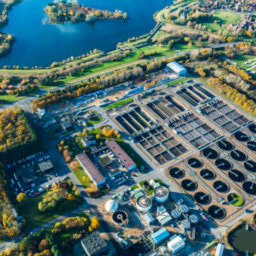

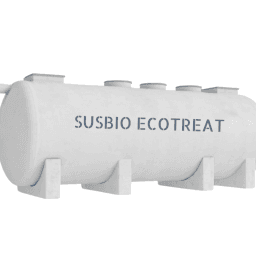

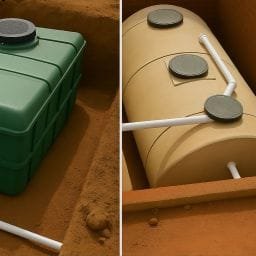

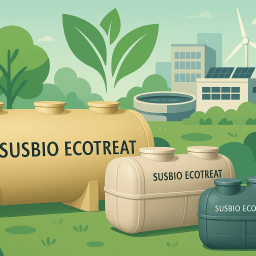
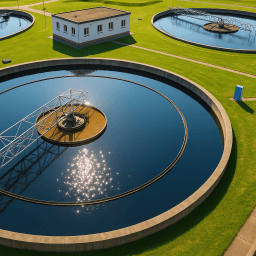

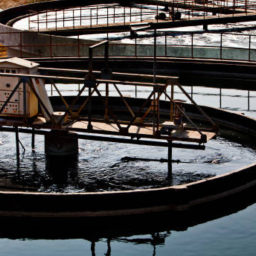

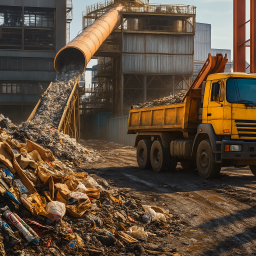
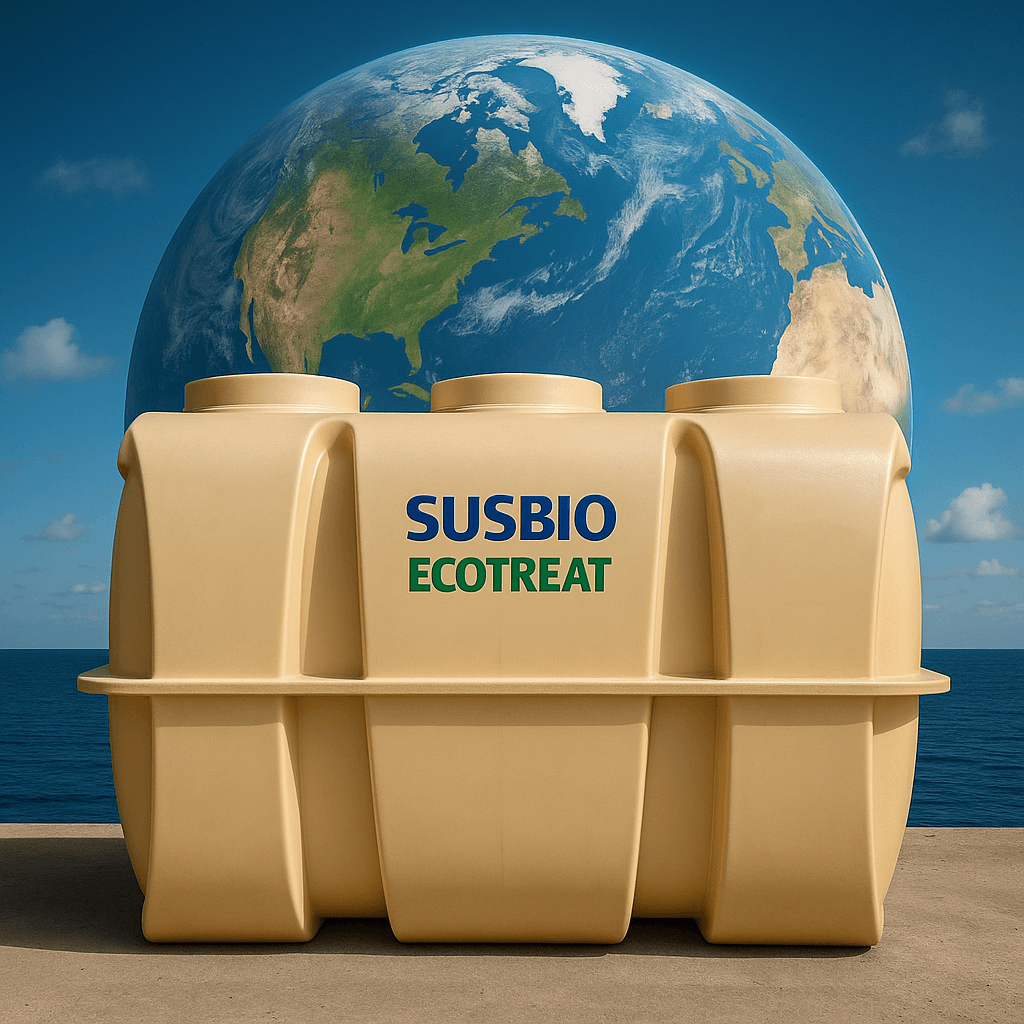
[…] today’s rapidly urbanizing world, effective wastewater treatment is essential for environmental sustainability and public health. As industries and communities […]